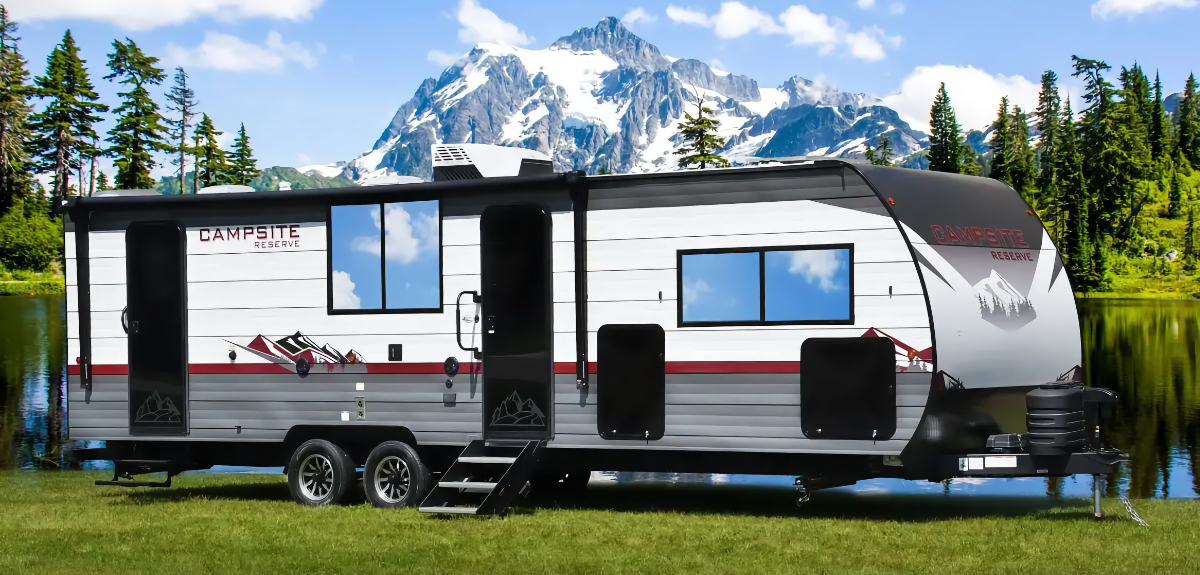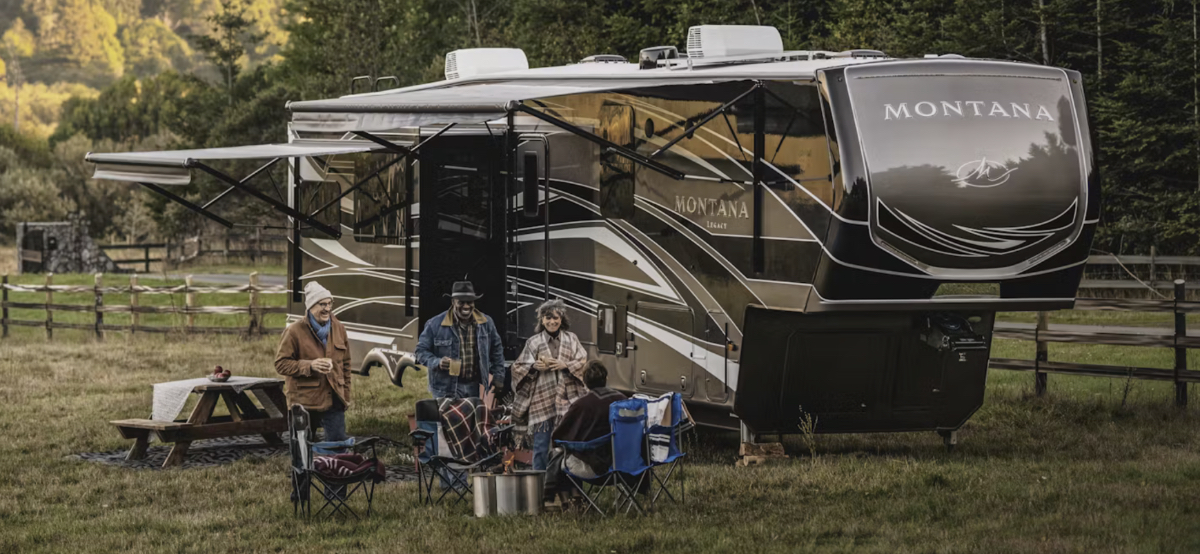Four-Season RVs: Winter Wonders
Searching for a Ride Suited to Cold Weather Wandering? Explore These RVs
Image Caption: Photo Credit: Getty
There are hundreds makes and models of RVs on dealer lots well-suited to keeping travelers comfortable April through October, when temperatures across North America are typically above freezing and below broiling. That’s also the time when the majority of RVers are out on the road, scratching that wanderlust itch.
Then fall arrives. Most part-time RVers instinctively put their “three-season” vehicles into hibernation until the next spring. However, if you’re one of those explorers who wants to keep on going into, or maybe through, the winter months, you’ll need to find a model designed for “four-season” or “extended season” use. That can be tricky. But it’s not impossible.
Which 2024 RVs can beat the elements? Read on.
What Makes A Four-Season RV?
What’s the difference between a “three-season” RV and a “four-season” model? The same factor that makes homes in Montana habitable during Big Sky winters, or Mississippi homes comfortable in summer: Insulation. The better the insulation, the better an RV handles extremes of hot and cold.
Why aren’t all RVs “four-season”? Cost. While Class A motorhomes are almost always four-season-ready, the rest of RVs aren’t. Manufacturers focus their attention on keeping build costs minimized, while catering to the majority of general RV buyers’ needs, which tend to focus on fair-weather camping. With the bottom line in mind, companies are reluctant to invest in better insulation, high-quality thermal windows, more robust furnaces and the like. However, those manufacturers that do offer four-season RVs, or special upgrades to extended-season use, bring many, if not all, of those elements into play when designing their products.
Combining Products For Higher R-Values
For example, most RV manufacturers use extruded polystyrene (XPS) foam block, which has an insulation value of about R-3.6 to R-4.7 per square foot in the typical RV sidewalls and is known to lose some of that insulation value over time. (The higher the R-value, the better your RV resists the transfer of heat.)
Four-season travel trailers, on the other hand, typically use the higher quality expanded polystyrene (EPS) foam block. That product has an R rating around 6, and it’s stable. Or, they combine insulation products, including laminated fiberglass exterior and interior panels such as Azdel Onboard composites (R-4.5), plus batten and foil-type products. These combinations can yield an R-value of 10 or more.
“What people tend to forget is that insulation works both ways,” says Talen Jayo, head of product development at Northwoods Manufacturing/Outdoors RV, a premier mid-size RV manufacturer in northeastern Oregon that builds all of their RVs with four-season standards in mind. “High R-value insulation works just as well during the hot months as it does during the cold season, keeping your family as comfortable as possible while you enjoy the outdoors.”
The same design aspects applies to four-season RV builders when it comes to insulating the roof, floor, slide-outs, external storage compartments, insulating and designing the entire plumbing and heating/cooling systems, and addressing areas where air leaks help promote the loss of heat.
Building Better
The roof plays the biggest role in controlling heat loss in winter and heat intrusion during the summer.A towable RV’s roof is typically flat and made with a very thin layer of a rubber composite or a polyvinyl chloride (PVC) membrane glued down to the OSB plywood, which is attached to the roof framing. Underneath that is the insulation, which is typically fiberglass batten material like used in a house, rigid-foam board, or a combination of insulation materials.
R-values depend on the type of insulation material and thickness, but on towables, roof insulations range between R-7 to R-20 depending on how much space is between the roof and the interior ceiling panels. Note: Flat RV roofs have less insulation—i.e., lowest R-value—than their radiused-roof counterparts.
Floors and Slide-Outs
Floors and RV slide-outs are also in the conversation when it comes to managing the elements. The typical floor in a three-season RV doesn’t have any insulation in either the main or slides. Four-season RVs sometimes add an insulating layer under the carpet in both, as well as double the slide seals to prevent heat loss. This type of added insulation plays a big role in Class C vehicles, camper vans, and slide-in pickup campers built on steel frames. Steel or metal frames absorb cold, which transmits right into the RV unless there’s some insulating layer(s) to prevent the heat/cold transfer.
Insulating Below The Floor
Insulating underneath the RV—the underbelly—is also important, and one of the areas a three-season RV is usually not as robust as that found in a comparable four-season model. A combination of corrugated black plastic sheeting (R-6) with a layer of rigid-foam above it work together to prevent radiated heat from coming through the floor, as well as heat being drawn out from beneath the RV. In addition, serious four-season RV manufacturers design the underbelly so heat from the furnace is circulated above holding tanks and valves, with the tanks heated by 12-volt pads to prevent freezing of liquids.
Some four-season RV manufacturers, such as Northwood Manufacturing, go to the added expense of insulating under the carpets and wrapping holding tanks in an insulating material such as AstroFoil (now known as AstroShield), a polyethylene bubble sandwiched between two protective sheets of a strong metalized polyester film with an R-value as high as R-19.
Keystone RV is one of a number of manufacturers that utilize AstroFoil in the building of their products, and it is one of the products listed in the “Polar Pack” all-season protection package for Alpine and Avalanche fifth-wheels and Acadia “Peak Weather Performance Package” to enhance roof and wall insulation. It’s also used in Keystone’s “Elements Climate Control Package” to insulate the underbelly of travel trailers.
Another thing to look for when searching for your next four-season RV is PEX tubing in the plumbing. It offers great benefit for cold-weather (sub-freezing) use: if water-filled PEX tubing freezes, the elasticity of the material allows it to expand, reducing the chances of cracking or splitting, then return to its original size upon thawing.
Top Four-Season RVs
Four-season RVs, or RVs that have option packages to make them better-suited for extended-season camping, come in a variety of makes, models and sizes.
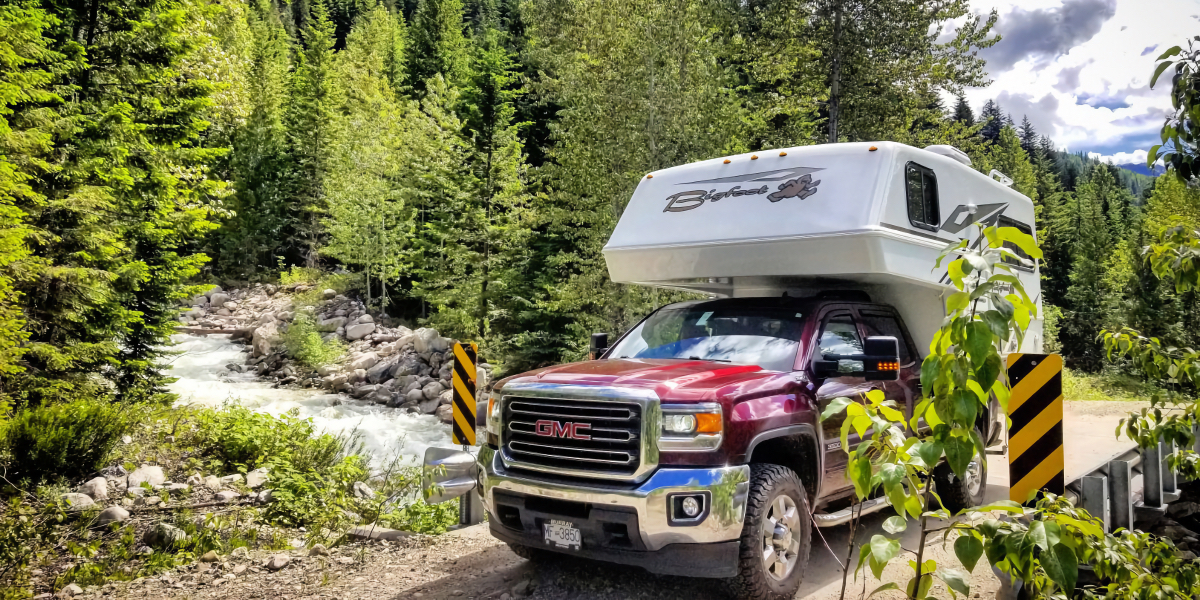
Photo Credit: Bigfoot Industries
Bigfoot Industries 25C10.4 (MSRP: $59,999)
This pickup camper is one of the best-insulated on the market, with R-8 EPS rigid foam laminated inside the 1.5 inch-thick, two-piece fiberglass body shell. It features dual-propane tanks to feed a 30,000 BTU furnace, heated and enclosed water tanks, and solar-reflective thermal-pane windows. The fiberglass body doesn’t transmit heat like a metal-frame.
Length:17’11” | Sleeps: 3 | Dry Weight: 3,220 lbs. | Furnace: 30K BTU | Propane: (2) 20 lbs.
Imperial Outdoors XploreRV-145 (MSRP: $112,950)
When it comes to a real four-season RV, few can match the build on this one. This 21’7” all-season, all-terrain travel trailer has three-inch-thick insulated/laminated walls (R-18.5), one-piece R-15 laminated floor and roof (R-18.5), plus a 20.4K BTU Truma Combi Eco Plus furnace that’s ducted throughout the trailer. This camper also uses nitrogen-filled, Euro-style acrylic-thermal-pane windows, which have a much higher R-value than dual-pane windows made from glass.
Length: 21’7” | Height: 9’9” | UVW: 4,400 lbs. | GVWR: 6,172 lbs. | Furnace: 20,400 BTU | Propane: (2) 20 lbs. | Sleeps: 2
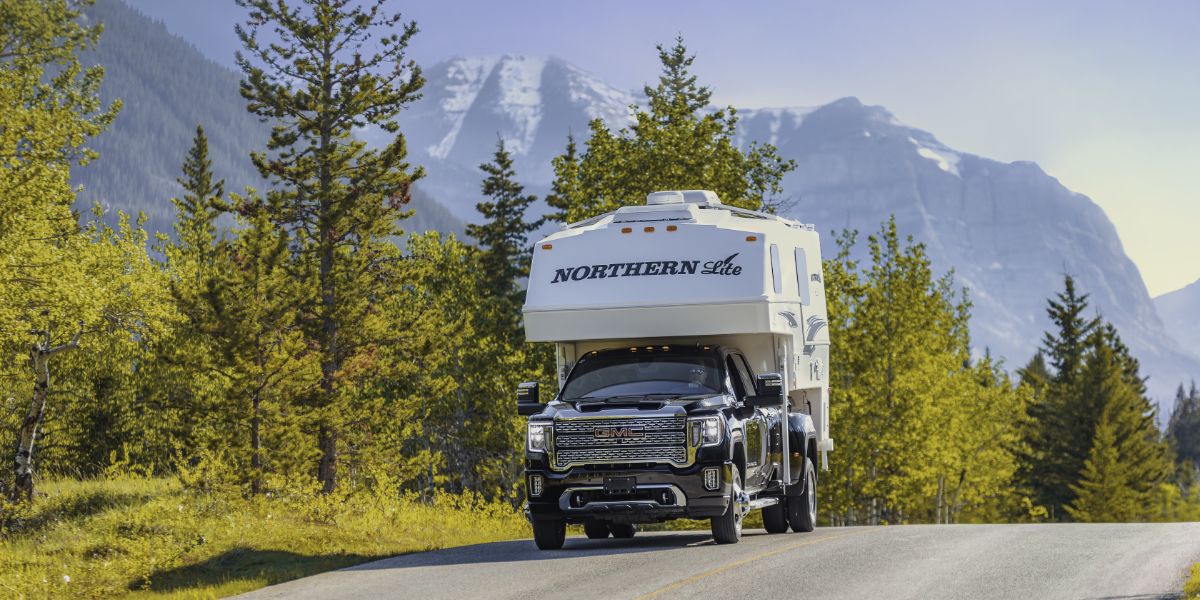
Photo Credit: Northern Lite
Northern Lite 10-2EXSE: (MSRP: $62,960)
Northern Lite fiberglass shell pickup campers, like this one, come with heated basements, R-7 block foam insulation (tested to -4 degrees F), thermal-pane windows and skylights, heated tanks, and a 20,000 BTU furnace. The Special Edition series is Northern Lite’s most popular series of four-season truck campers. They are the lightest camper of this type on the market, and loaded with features.
Length:18’2” | Sleeps: 3 | Dry Weight: 3,285 lbs. | Furnace: 20K BTU | Propane: (2) 20 lbs.
K-Z Sportsmen SE 292RBK (MSRP: $50,879)
K-Z builds all of their Sportsmen travel trailers with a standard “Climate Package,” including this new 32-foot twin-slide model. The Climate Package includes enhanced insulation, so you can extend the camping season into the colder months. The double-slide 292RBK has a fully enclosed, insulated-and-heated underbelly to protect tanks and pipes, plus the radius roof has an R-20 rating, R-9 sidewalls, and the 5/8-inch thick tongue-and-groove flooring with an R-24 thermal rating.
Length: 32’ | Height: 10’8”” | UVW: 5,900 lbs. | GVWR: 7,000 lbs. | Furnace: 30,000 BTU | Propane: (2) 30 lbs. | Sleeps: 5
XLR Boost Explore 35XLRXF11 (MSRP: $113,369)
When outfitted with the XLR Climate Comfort Package, this toy hauler becomes a good fit for extended-season use. This insulation package adds tinted laminated windows, spray-on R-7 Freon Rigid Urethane Foam in the sidewalls, R-11 Freon Rigid Urethane Foam in the roof, R-7 insulation in the floors, 12-volt heated holding tank pads and Alumifoil insulation in the enclosed underbody. The ramp door is also insulated and laminated, as are all the storage doors.
Length: 40’5” | Height: 13’5” | UVW: 11,800 lbs. | GVWR: 7,630 lbs. | Furnace: 35,000 BTU | Propane: (2) 20 lbs. | Sleeps: 8
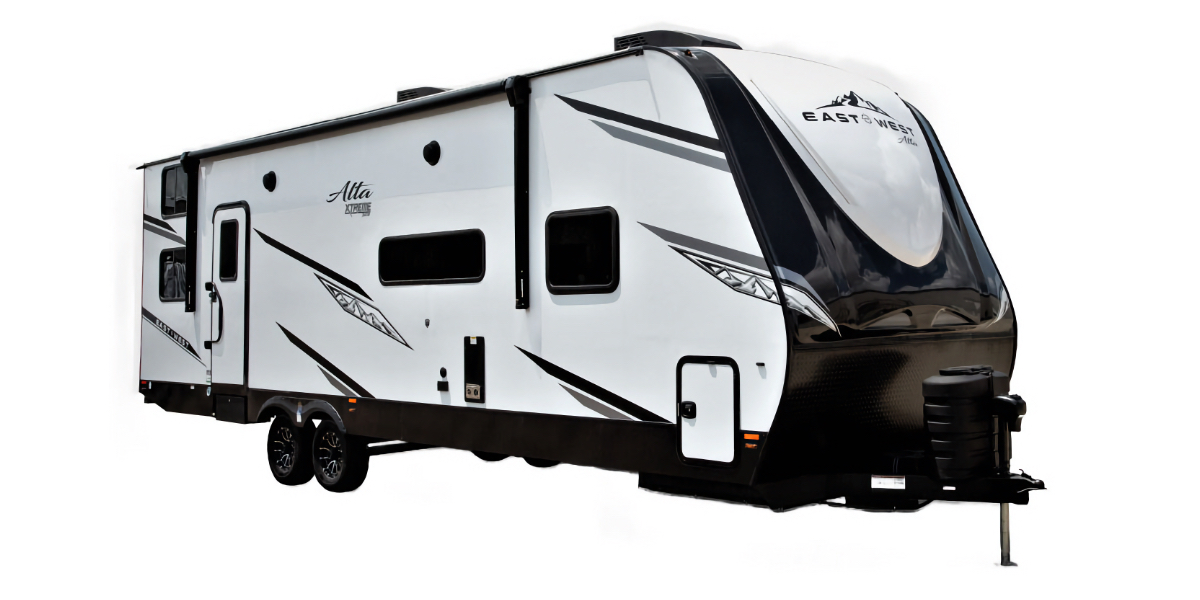
Photo Credit: East to West
East to West ALTA 3100KXT Xtreme 365 (MSRP: $75,574)
This new model is a true four-season travel trailer, built using industry-leading three-inch R-15 laminated sidewalls (Azdel Onboard laminated with EPS foam panels), and an R-21 rated, five-inch laminated crowned roof. It also features dual-pane windows, a massive 40K BTU Furnace, plus a 5K BTU Fireplace, heated basement and underbelly. East to West says the double-insulated floors have an R-38 rating, and this product utilizes 12-volt tank heaters as well as electric heat tape on the main water lines.
Length: 35’ 6” | Height: 12’7” | UVW: 8,830 lbs. | GVWR: 11,405 lbs. | Furnace: 40,000 BTU | Propane: (2) 20 lbs. | Sleeps: 4
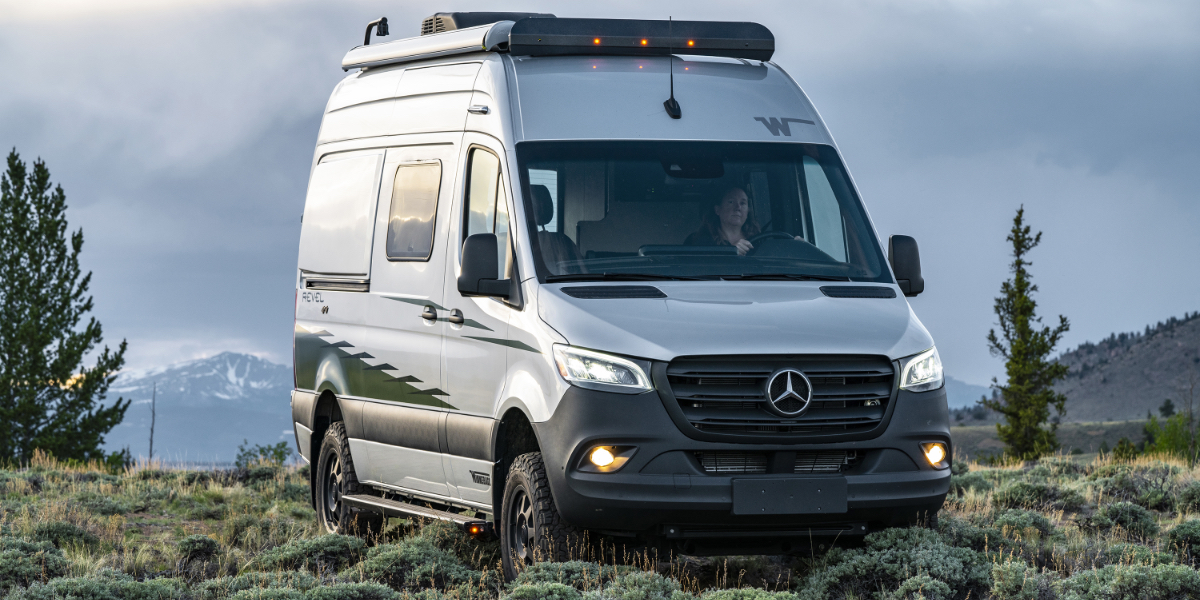
Photo Credit: Winnebago
Winnebago Revel 4×4: (MSRP: $210,293)
Built on the Mercedes Sprinter chassis, this is a good four-season or extended-season camper van. It utilizes CNC-cut, high-density foam sheets laminated to ABS body panels, precisely filling and insulating all the interior body voids to reduce noise and maximize thermal insulation. The walls are rated R-9.8 and roof R-7.7. The floor consists of plywood and expanded polystyrene foam laminate with R-5 value. Its double wall roto-molded water tank has R3.3 insulation between the inner and outer walls, and the fresh- and gray-water tanks are heated by Glycol lines returning from the interior coach heat exchangers.
Length: 19’ 7” | Height: 10’” | GVWR: 9,050 lbs. | GCWR: 13,930 lbs. | Sleeps: 2
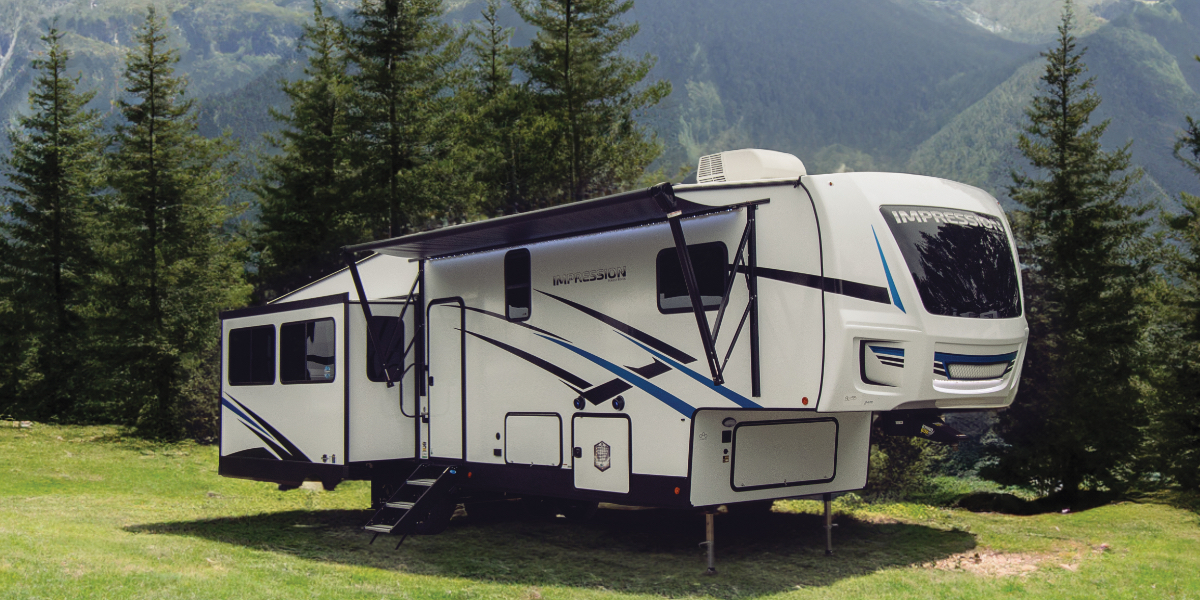
Photo Credit: Forest River
Forest River Impression 315MB (MSRP: $82,976)
Forest River’s quad-slide 38-foot fifth wheel includes a standard “Extended Season Package” with upgraded insulation in the roof and floor, enclosed tank valves, heated holding tanks via 12-volt pads, and a 35,000 BTU furnace. The furnace has ducting into the enclosed “Accessibelly” underbelly that has removable panels. The 315MB’s aluminum walls and floors are laminated with AstroFoil to maximize R-values.
Length: 38’ | Height: 13’2”” | UVW: 10,338 lbs. | GVWR: 13,935 lbs. | Furnace: 35,000 BTU | Propane: (2) 30 lbs. | Sleeps: 9
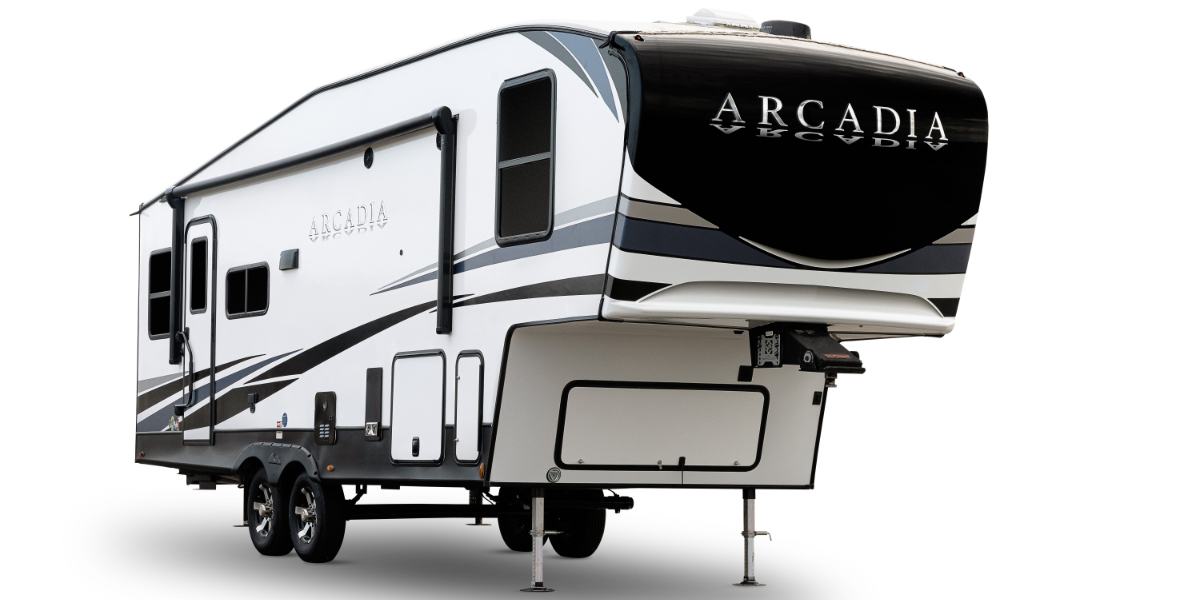
Photo Credit: Keystone RV
Keystone Acadia 35550MB 5th Wheel (MSRP: $96,382)
Keystone RV’s Acadia 3550MB fiver comes equipped with the company’s “Peak Seasonal Camping Package,” tested down to 0 degrees according to the manufacturer. The cold-weather package includes a 35K BTU furnace, fully enclosed, insulated and heated holding tanks, reflective insulation in the laminated floor, roof, and walls, a 5.1K BTU electric fireplace, BladePure High-Performance ducting, enclosed and insulated dump valves and a heated pass-thru storage compartment. Warm in the winter, cool in the summer.
Length: 39’ | Height: 13’5” | UVW: 12,310 lbs. | GVWR: 14,100 lbs. | Furnace: 35,000 BTU | Propane: (2) 30 lbs. | Sleeps: 6
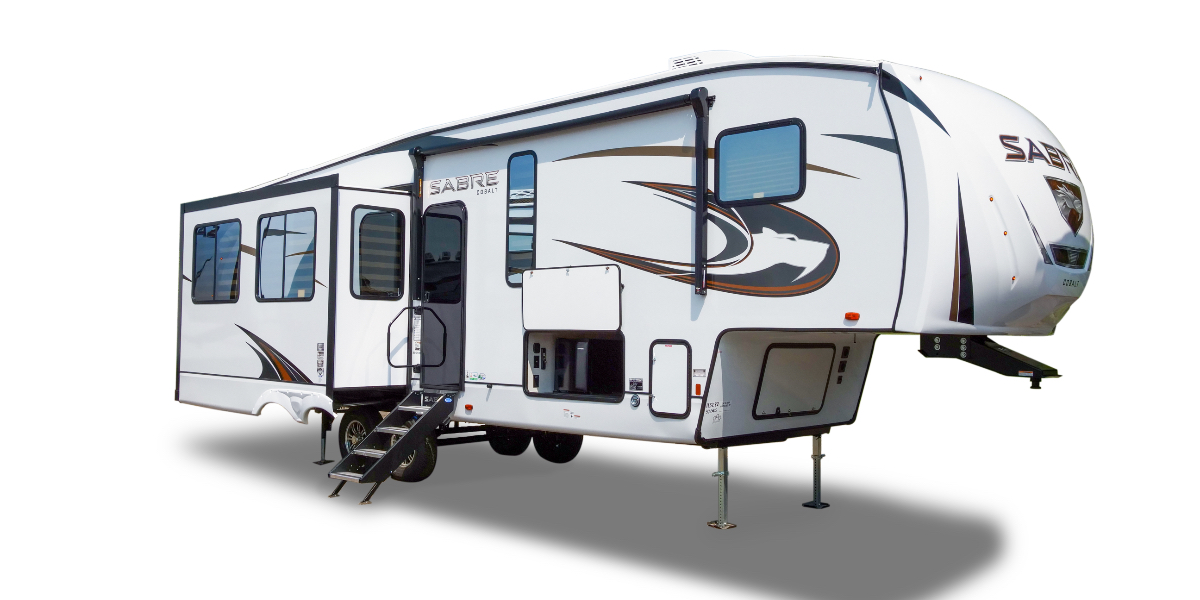
Photo Credit: Forest River
Sabre 32GKS (MSRP: $94,024)
Forest River’s Sabre line of luxurious fifth wheels are a good choice for extended-season camping. The triple-slide 32GKS, for example, comes standard with the Polar Package for extended season camping. This package features a fully enclosed underbelly with batten insulation as well as forced air heating directly above the holding tanks. Sabre also wraps the entirety of the roof and front cap with a thermal foil layer and more batten insulation as an additional protective layer. The body is made from two-inch vacuum bonded and insulated sidewalls and slide box walls.
Length: 34’10” | Height: 13’5” | UVW: 9,953 lbs. | GCWR: 11,760 lbs. | Furnace: 35,000 BTU | Propane: (2) 20 lbs. | Sleeps: 4
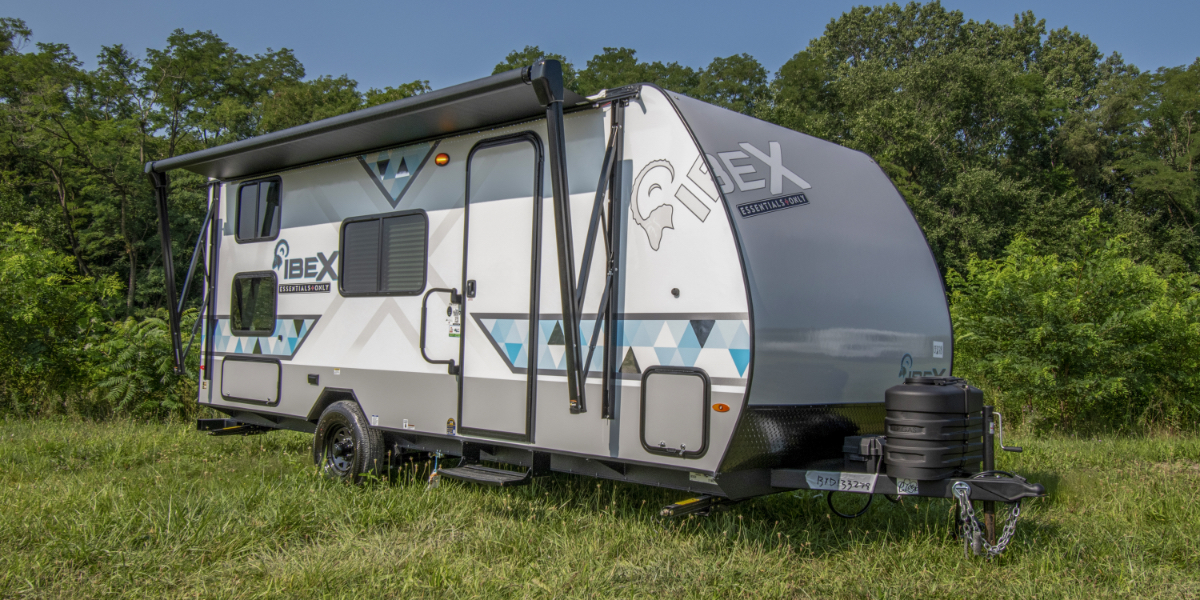
Photo Credit: Ibex
IBEX 23BHEO (MSRP: $39,146 )
This model, like all of the IBEX travel trailers and toy haulers, is built using Azdel Onboard composite materials laminated with high-density foam insulation along with heated and enclosed underbelly, tank pad heaters and enclosed termination systems. The 12-volt heated tanks pads attached directly to each tank, and the enclosed termination system directly combats any cold weather concerns to achieve a desired extended camping season. Dual 20-lb. propane tanks feed a 20K BTU furnace to help combat cold weather.
Length: 26’2” | Height: 11’3” | UVW: 4,808 lbs. | GVWR: 7,630 lbs. | Furnace: 25,000 BTU | Propane: (2) 20 lbs. | Sleeps: 8
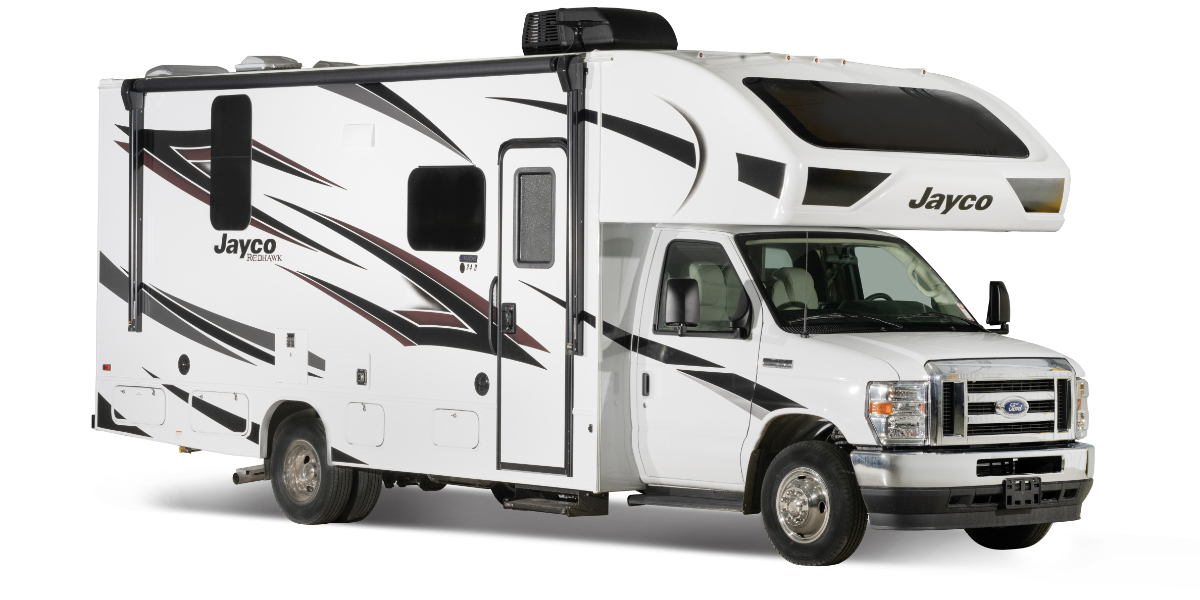
Photo Credit: Jayco
Jayco Redhawk 24B (MSRP:$152,293)
Jayco’s Redhawk, built on the Ford E-450 gas chassis, are one of the most popular Class Cs on the road – this one should be no different. It’s a good extended-season model. The sidewalls are vacuum-bonded and insulated, the holding tanks heated by 12-volt pads, it uses frameless thermal windows and a one-piece fiberglass front cap. Just remember, Jayco does not recommend using their Class Cs for extended periods when temps are below freezing.
Length: 26’8” | Height: 11’6” | GCWR: 22,000 lbs. | Furnace: 31,000 BTU | Propane: 20 lbs. | Sleeps: 4
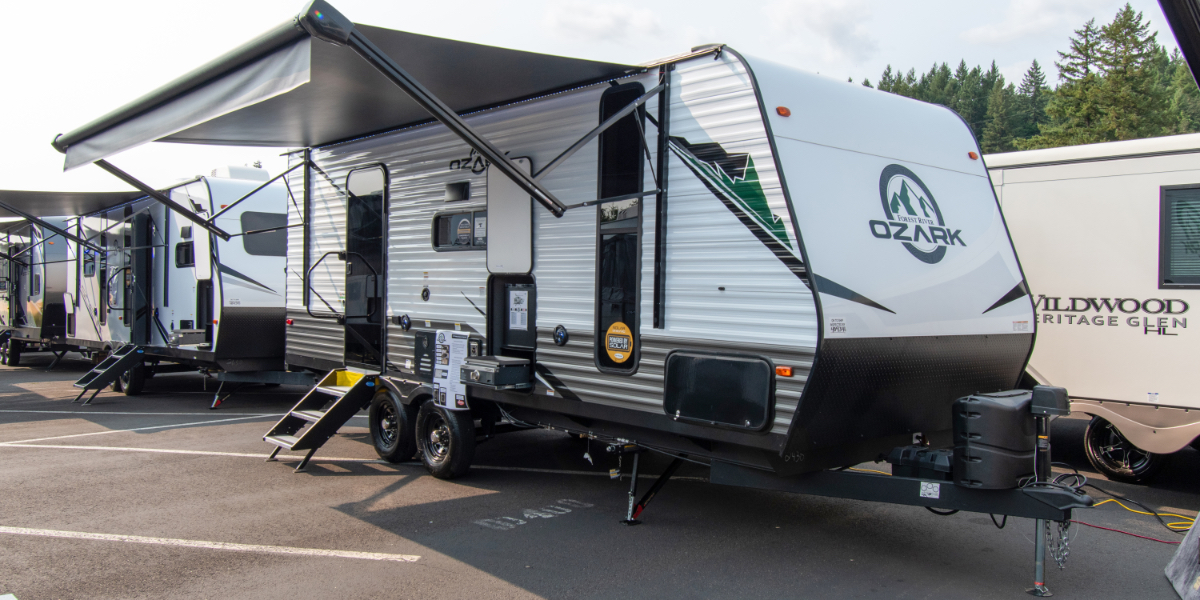
Photo Credit: Forest River
Ozark 2430RBK (MSRP: $42,347)
Forest River’s new travel trailer tows easily behind half-ton pickups and features an enclosed Accessibelly system with 12-volt heat pads on holding tanks, R-3.8 thermo-foil insulation under the flooring, tinted dual-pane windows that open throughout the coach to help regulate interior temperature, a combination of EPS, thermofoil and batten insulation in the walls and ceiling, and a 20,000 BTU furnace.
Length: 34’10” | Height: 13’5” | UVW: 5,578 lbs. | GCWR: 9,510 lbs. | Furnace: 20,000 BTU | Propane: (2) 20 lbs. | Sleeps: 4
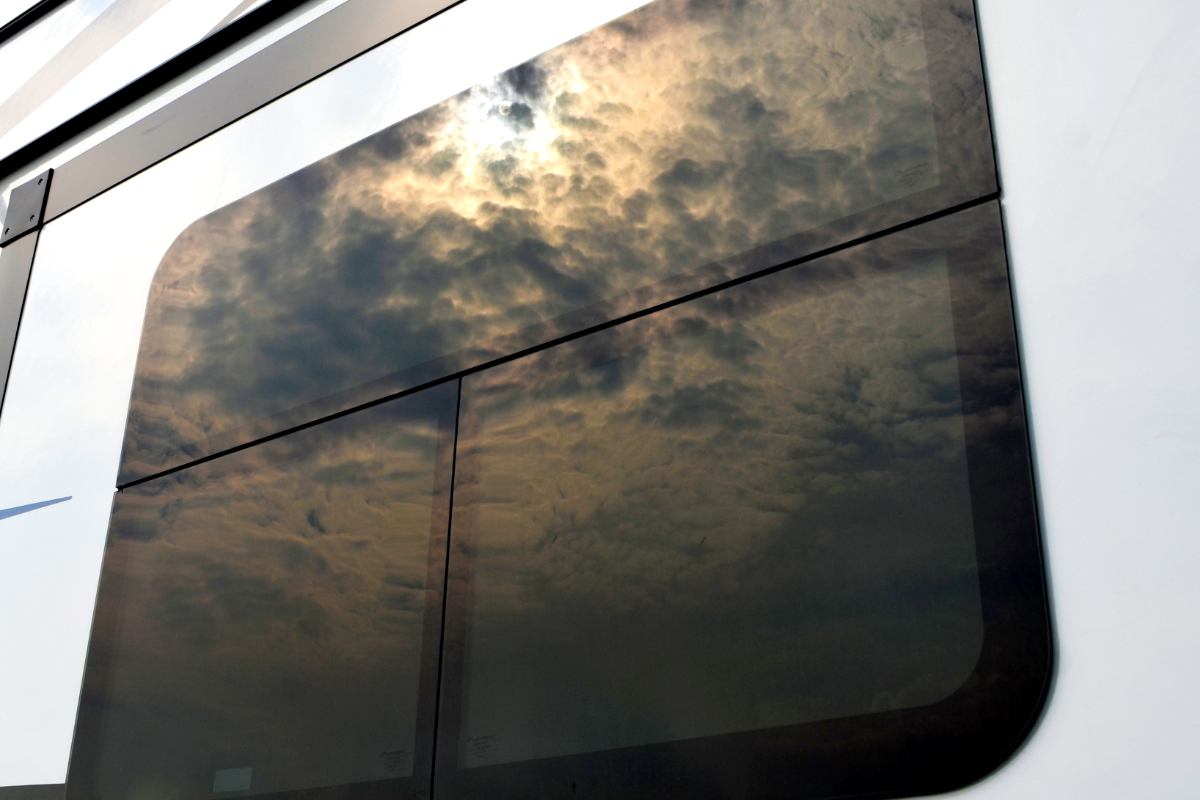
Photo Credit: Bruce Smith
Thermal-Pane Truths
One area of insulation that always gathers a lot of RV buyer attention is the use of “thermal pane” windows. While sidewalls in a four-season RV typically have an insulation value between R-6 and R-10, dual-pane/thermal-pane windows are, at best, typically less than R-1.8 according to glass makers. One tech from a major player in the RV glass-making industry said thermal-pane windows make about as much of a “calculable difference in the overall insulation of an RV as does sprinkling it with pixie dust.”
The reason: there’s not enough air space between glass panes to make much of a difference in controlling heat transfer. While home thermal-pane windows often have a ó-inch or more dead-air space between panes of high-quality glass to give an R-value closer to 4 , the typical thermal-pane/dual-pane RV window has a tiny 3/16-inch air gap sandwiched between 1/8-inch panes of inexpensive glass. That tiny dead-air gap is only enough to provide an R-value of about .8 with clear glass and up to R-1.8 using one pane of Low-E glass behind the outer privacy glass. Dual-pane frameless and laminated RV side windows are no better in improving an RV’s insulation, manfacturers say.
On the other hand, RV thermal-pane windows of all types do provide a noticeable reduction in exterior noise penetrating the living space. That, alone, may be worth the added cost. So if the salesperson or RV advertisements tout dual-pane windows making a significant improvement in insulation, ask to see actual comparison test data. Dual-pane/thermal-pane windows (which can be an $1,800 or more option) reduce exterior noise, but do little to improve heating/cooling insulation.
Read the Fine Print
There are a lot of sales pitches and marketing hype related to four-season, all-season, arctic, polar and similar RV “option packages.” There’s no standard as to what these packages include, what specific areas they address, or data that shows the difference in value over the “standard” features.
It’s also important to note that even with some of these special cold-weather/four-season option packages, some RV manufacturers do not recommend using any of their products in below freezing temperatures. So it pays to delve into all the info before choosing one over another.

